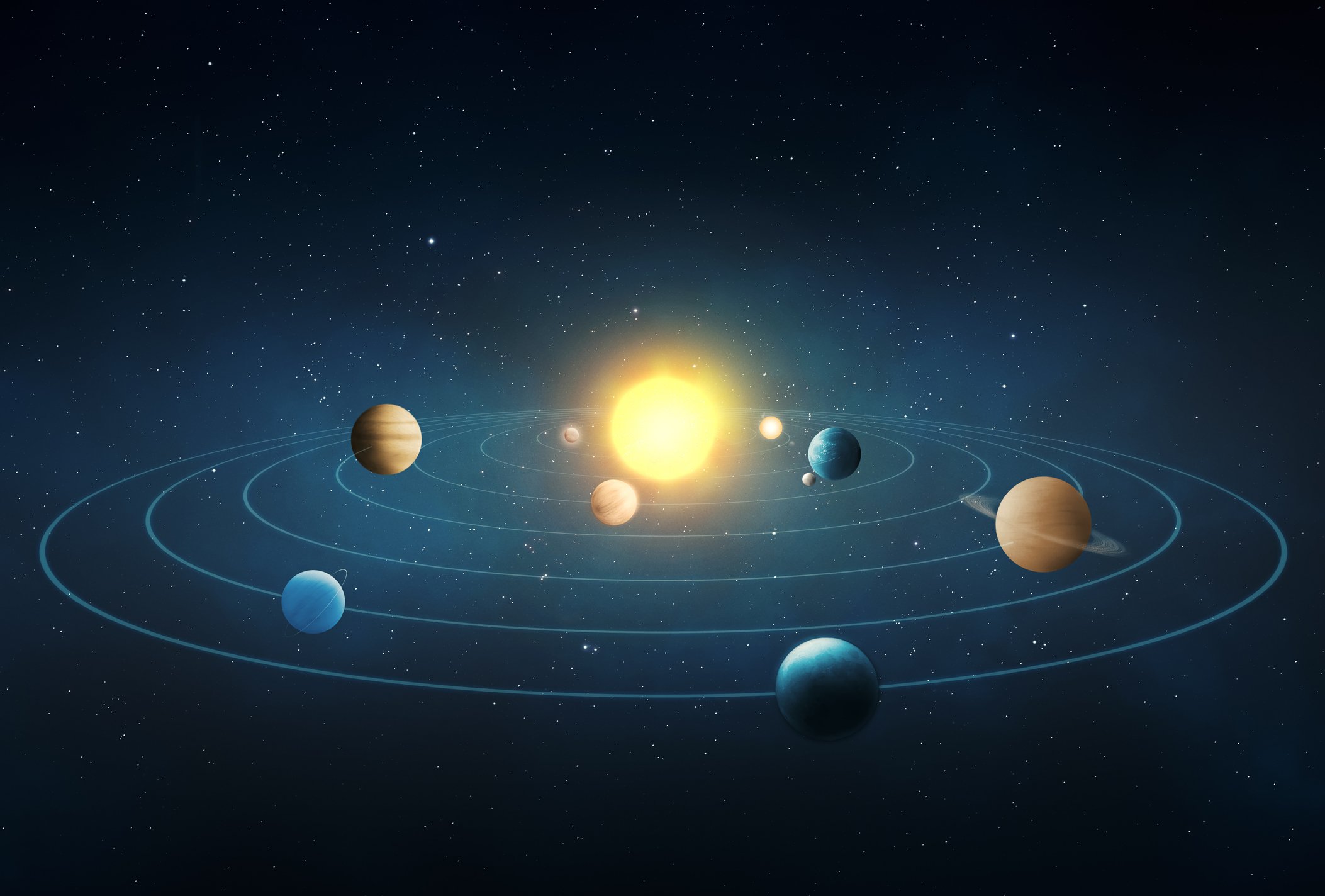Although the Earth appears to have a perfectly spherical shape when viewed from space, it is not as round as most people believe. It actually has a flattened spherical shape; That is, it is approximately spherical in shape, but it is flattened at the poles and more swollen at the equator. Just like our planet, its orbit is not perfectly circular.
In most maps representing the Solar System, planets and other celestial bodies are shown in circular motions orbiting the Sun. Therefore, many people believe that this information is correct. But the truth is that cosmic objects can exhibit different orbital shapes. For example, most of the stars in our system are elliptical..
“An orbit is the curved path that an object in space (such as a star, planet, moon, asteroid or spacecraft) travels around another object due to gravity. Gravity causes objects with mass in space to attract others. European Space Agency (ESA) in a publication “The gravitational attraction brings them together with enough momentum that they can sometimes start orbiting each other,” he explains.
our orbit It is determined by the interaction between the Earth and the Sun; It is precisely the gravitational force between objects that keeps the orbit in a balanced state.It allows our planet to constantly revolve around the star. In other words, the gravitational force is the main reaction that determines the orbit of a planet, comet, or any object in space.
We gathered information from astronomers and experts in the field to explain why planetary orbits are not completely perfect and what effect the force of gravity has on this process.
Gravitational force and orbits of planets
The shape of a celestial body’s orbit is determined by the combination of momentum and gravity: momentum is responsible for directing the object in a particular direction, while gravity pulls it — they also depend on mass, speed and distance.
This means, Orbits are formed when momentum and gravitational force work together. In the example of a comet heading towards Earth, the initial momentum moves the comet, but it is the planet’s gravity that can change its orbit.
When creating an orbit, celestial bodies begin to move evenly in an elliptical or oval shape; The first observation of this phenomenon was made by German astronomer and mathematician Johannes Kepler. Before this, ancient scientists believed that planets and other objects in the universe orbited in a perfectly circular pattern.
Of course, Kepler’s model is just an approximation of what orbits actually are, because orbits tend to change over time. For example, comets have high momentum and are pulled by the Sun’s gravity, resulting in a long oval orbit. But, This orbit may change if another cosmic object with a strong gravitational pull appears in the region.
A closer example to human civilization is the orbit of the Moon, which is constantly changing due to different reactions, such as gradual receding from the Earth; This movement occurs at a rate of approximately 4 centimeters per year. As a result, a slight expansion of the Moon’s orbit occurs, and this expansion continues to occur slowly over millions of years.
Importance of elliptical orbits
Theoretically, if a planet has a certain mass, speed, and distance from its star, its orbit could be a perfect circle. But, The influence of other objects in the solar system changes this shape, leading to the formation of elliptical orbits. Therefore, most orbits result in an elliptical or oval shape.
In general, most orbits in the Solar System tend to be elliptical, and these are what provide the initial conditions for the development of a planet. It is important to emphasize that studies of orbital motion are widely used to send probes, satellites, rockets and even astronauts to the frontiers of space.
“Elliptical orbits are stable and have the same amount of total energy on the orbit as circular orbits. This is because, for example, the Earth orbits faster when it is closer to the Sun in its elliptical orbit, and faster when it is farther away, the equivalent of a circular orbit.” orbits slower with the average value Elliptical orbits are much more general and allow for a wider range of initial conditions that exist when a planet/star system forms, making them a possible solution to the characteristics of a planet’s orbital properties”, US. It is described in a publication from the National Radio Astronomy Observatory in .
Did you like the content? Read more news about dark energy at TecMundo. If you want, take the opportunity to understand why we do not feel that the Earth is rotating.
Source: Tec Mundo
I’m Blaine Morgan, an experienced journalist and writer with over 8 years of experience in the tech industry. My expertise lies in writing about technology news and trends, covering everything from cutting-edge gadgets to emerging software developments. I’ve written for several leading publications including Gadget Onus where I am an author.













